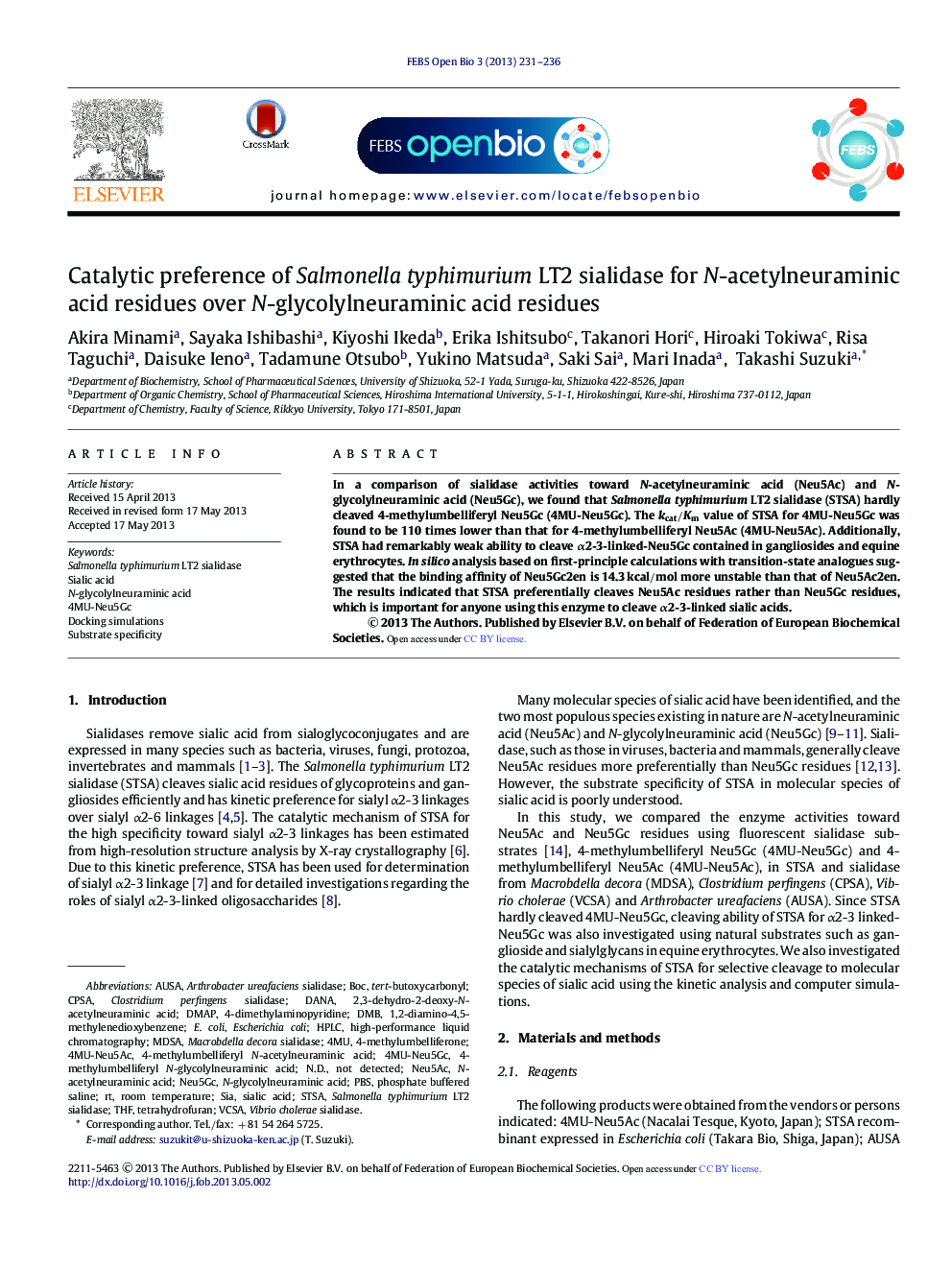| Article ID | Journal | Published Year | Pages | File Type |
|---|---|---|---|---|
| 1981789 | FEBS Open Bio | 2013 | 6 Pages |
•Salmonella typhimurium LT2 sialidase (STSA) hardly cleaved 4MU-Neu5Gc.•STSA hardly cleaved Neu5Gc residues in ganglioside and equine erythrocytes.•The kcat/Km value of STSA for 4MU-Neu5Gc was 110 times lower than that for 4MU-Neu5Ac.•Binding affinity of Neu5Gc2en is more unstable (by 14.3 kcal/mol) than that of Neu5Ac2en.•Amino acid residues that recognize sialyl α2-3 linkage also discriminate Neu5Gc and Neu5Ac.
In a comparison of sialidase activities toward N-acetylneuraminic acid (Neu5Ac) and N-glycolylneuraminic acid (Neu5Gc), we found that Salmonella typhimurium LT2 sialidase (STSA) hardly cleaved 4-methylumbelliferyl Neu5Gc (4MU-Neu5Gc). The kcat/Km value of STSA for 4MU-Neu5Gc was found to be 110 times lower than that for 4-methylumbelliferyl Neu5Ac (4MU-Neu5Ac). Additionally, STSA had remarkably weak ability to cleave α2-3-linked-Neu5Gc contained in gangliosides and equine erythrocytes. In silico analysis based on first-principle calculations with transition-state analogues suggested that the binding affinity of Neu5Gc2en is 14.3 kcal/mol more unstable than that of Neu5Ac2en. The results indicated that STSA preferentially cleaves Neu5Ac residues rather than Neu5Gc residues, which is important for anyone using this enzyme to cleave α2-3-linked sialic acids.
